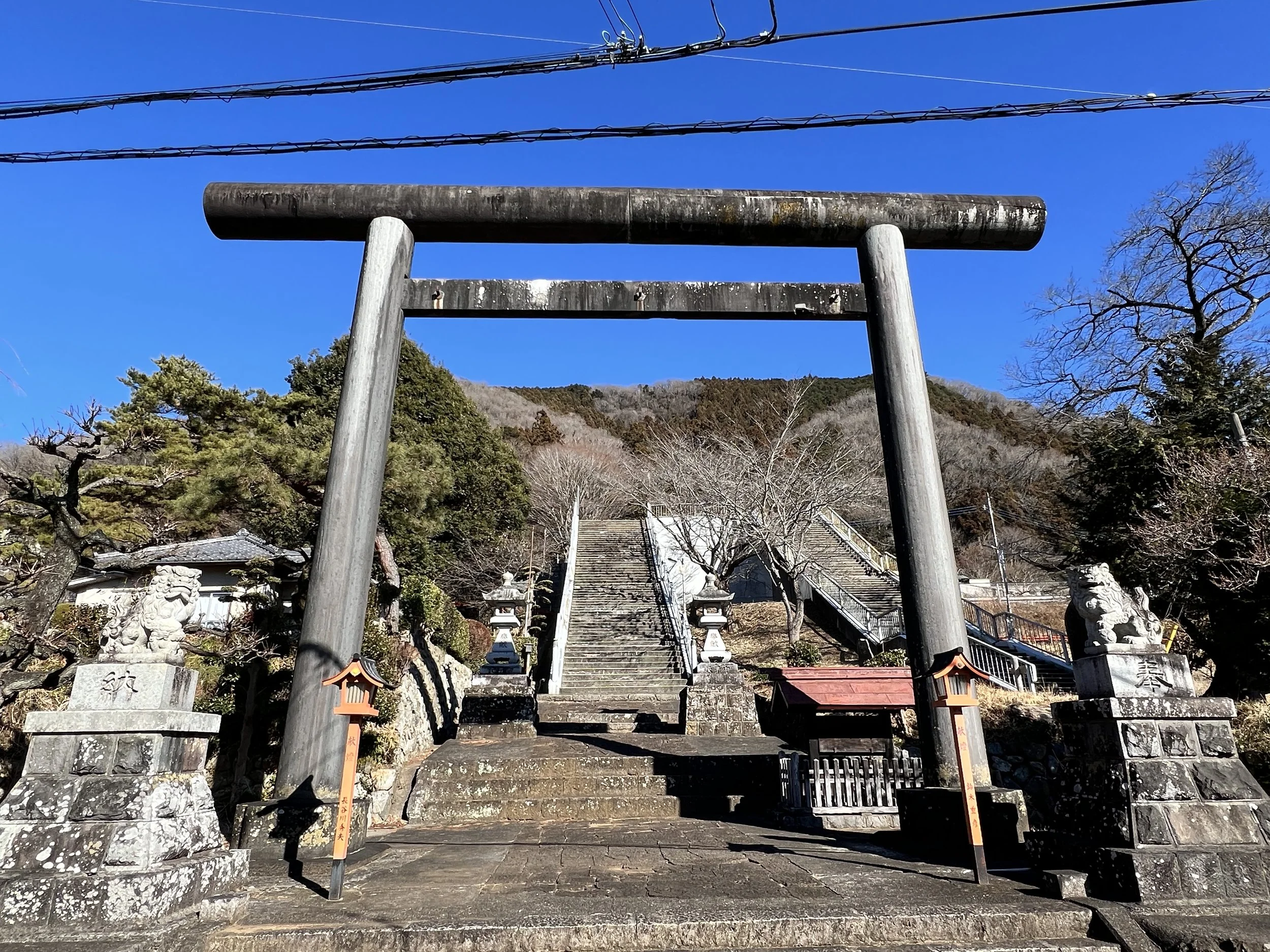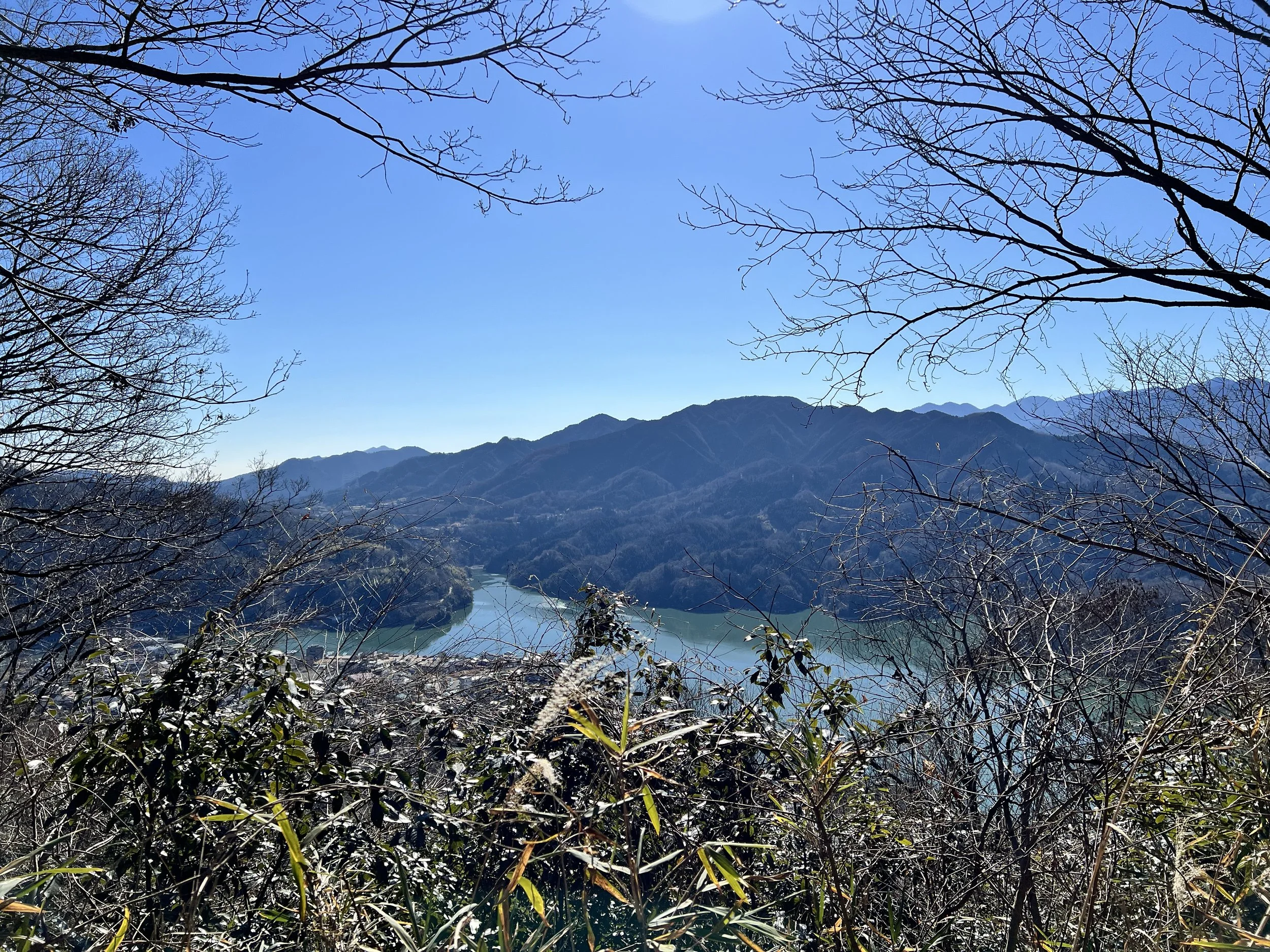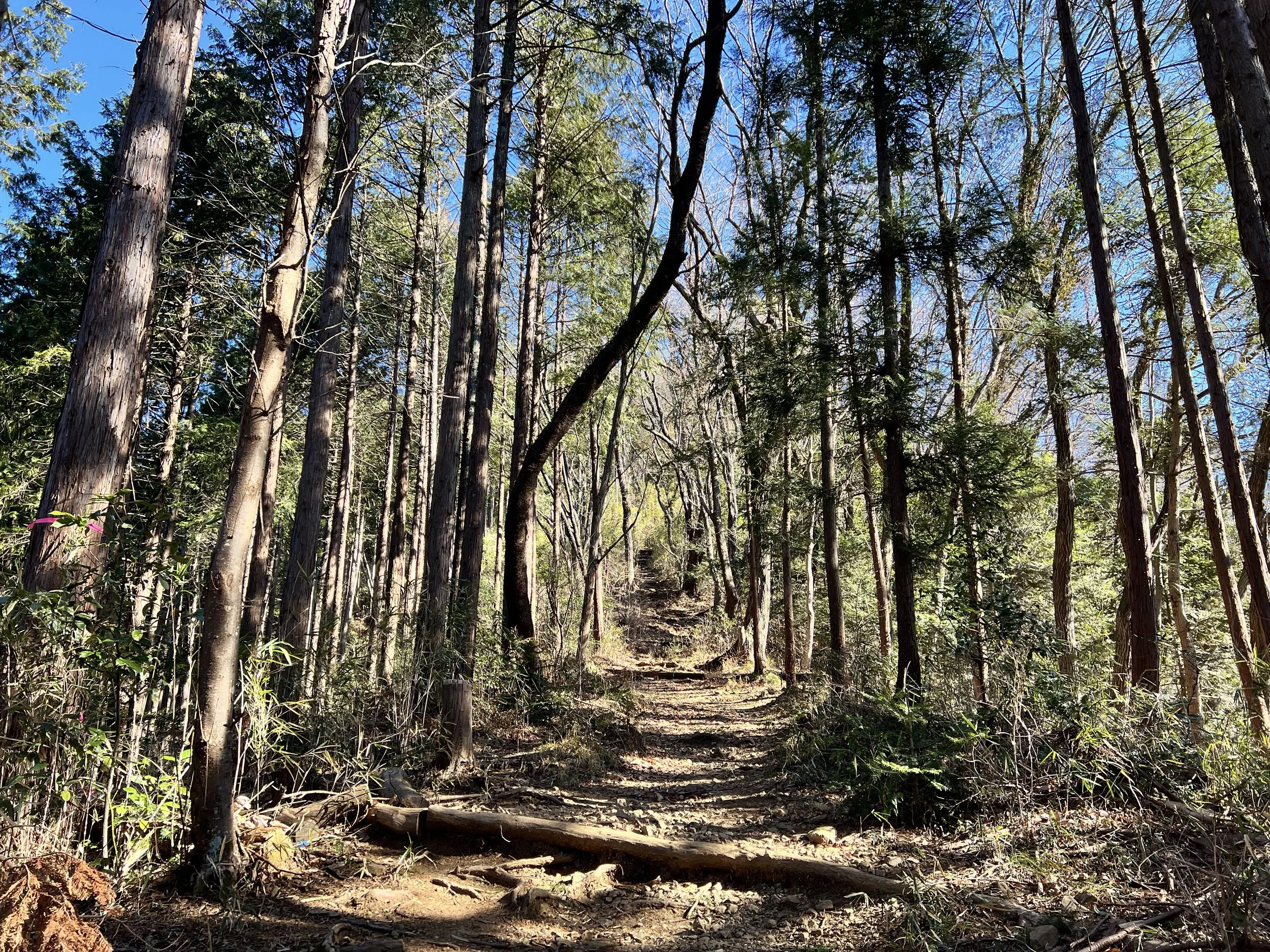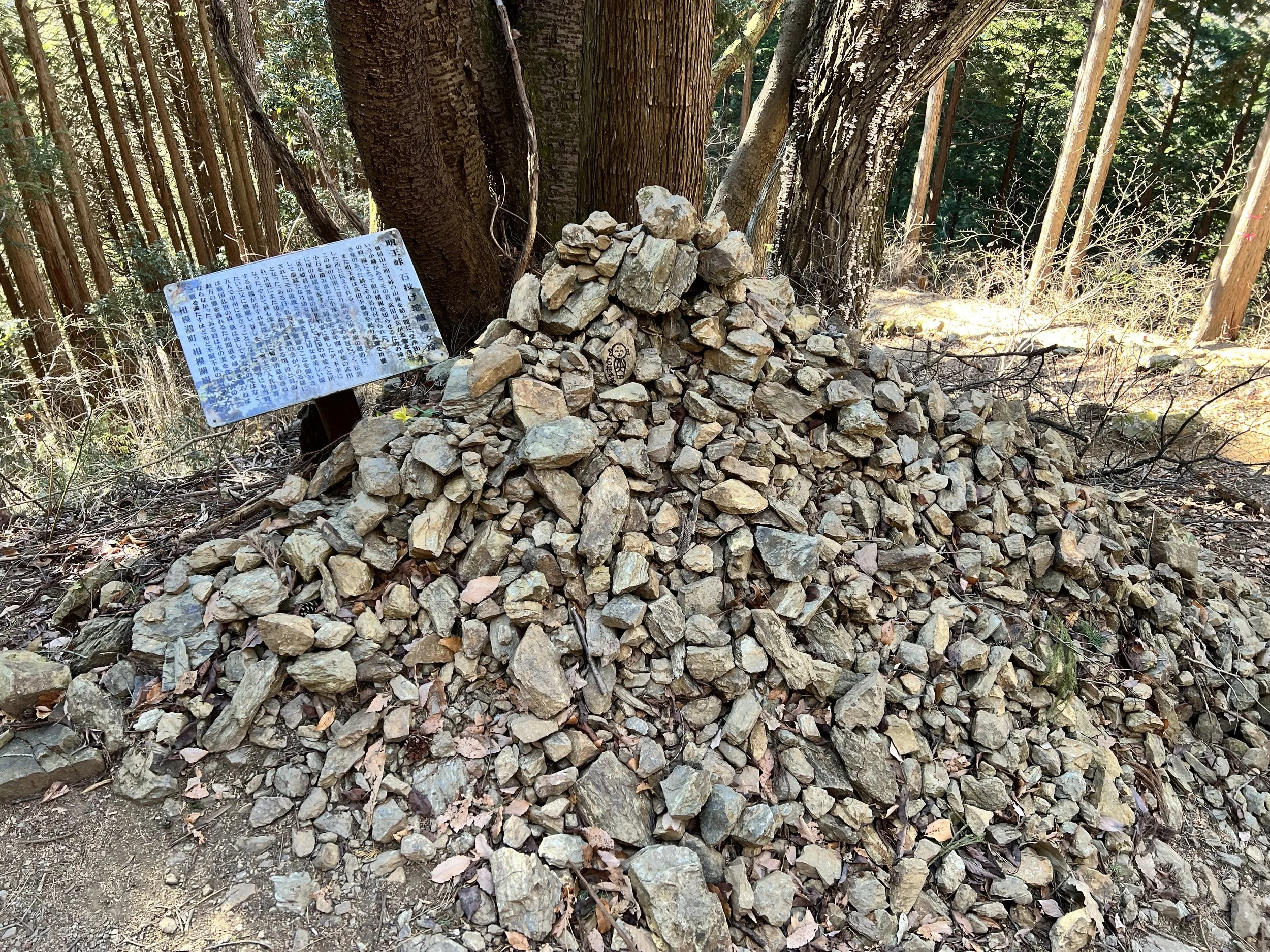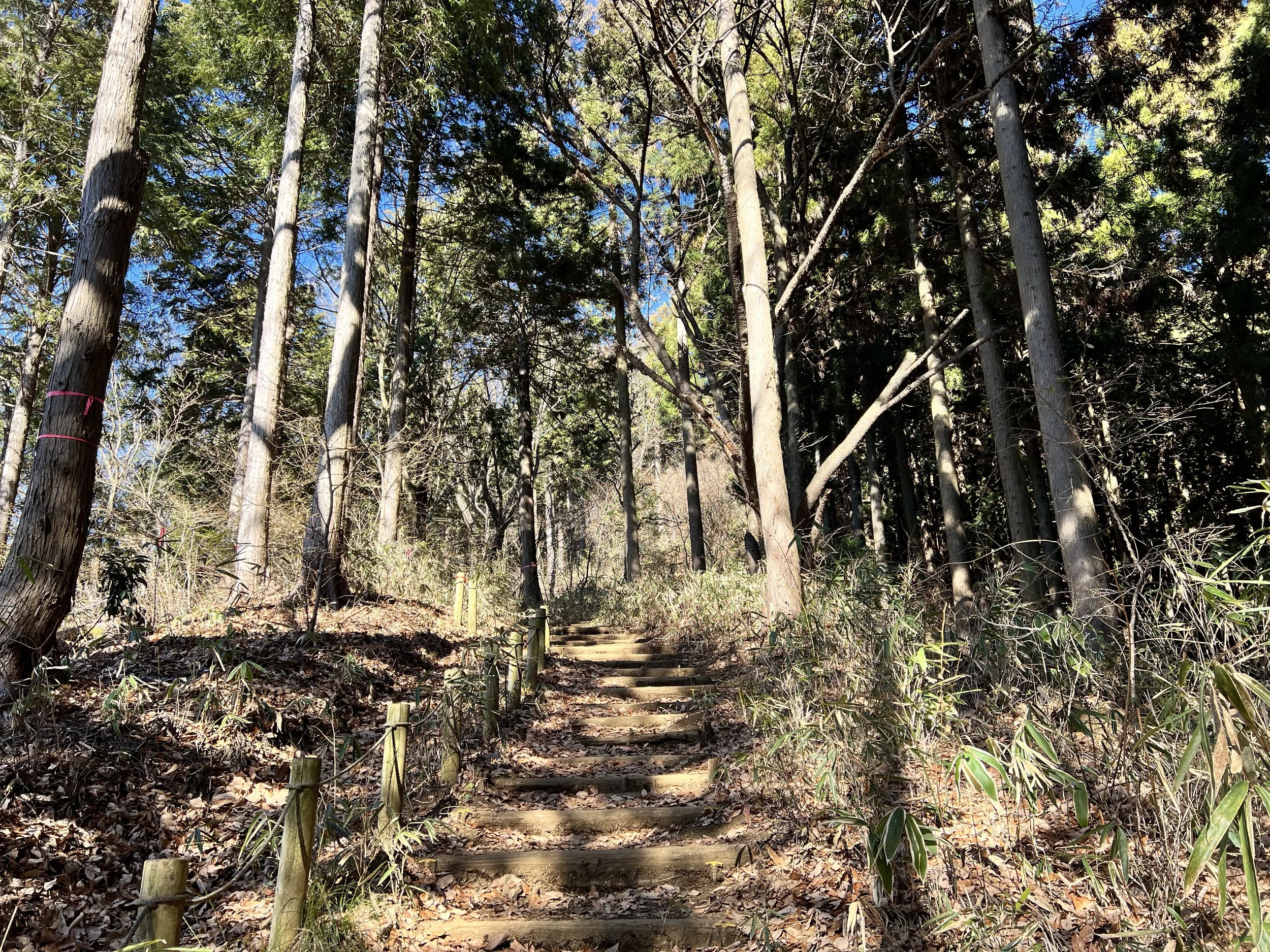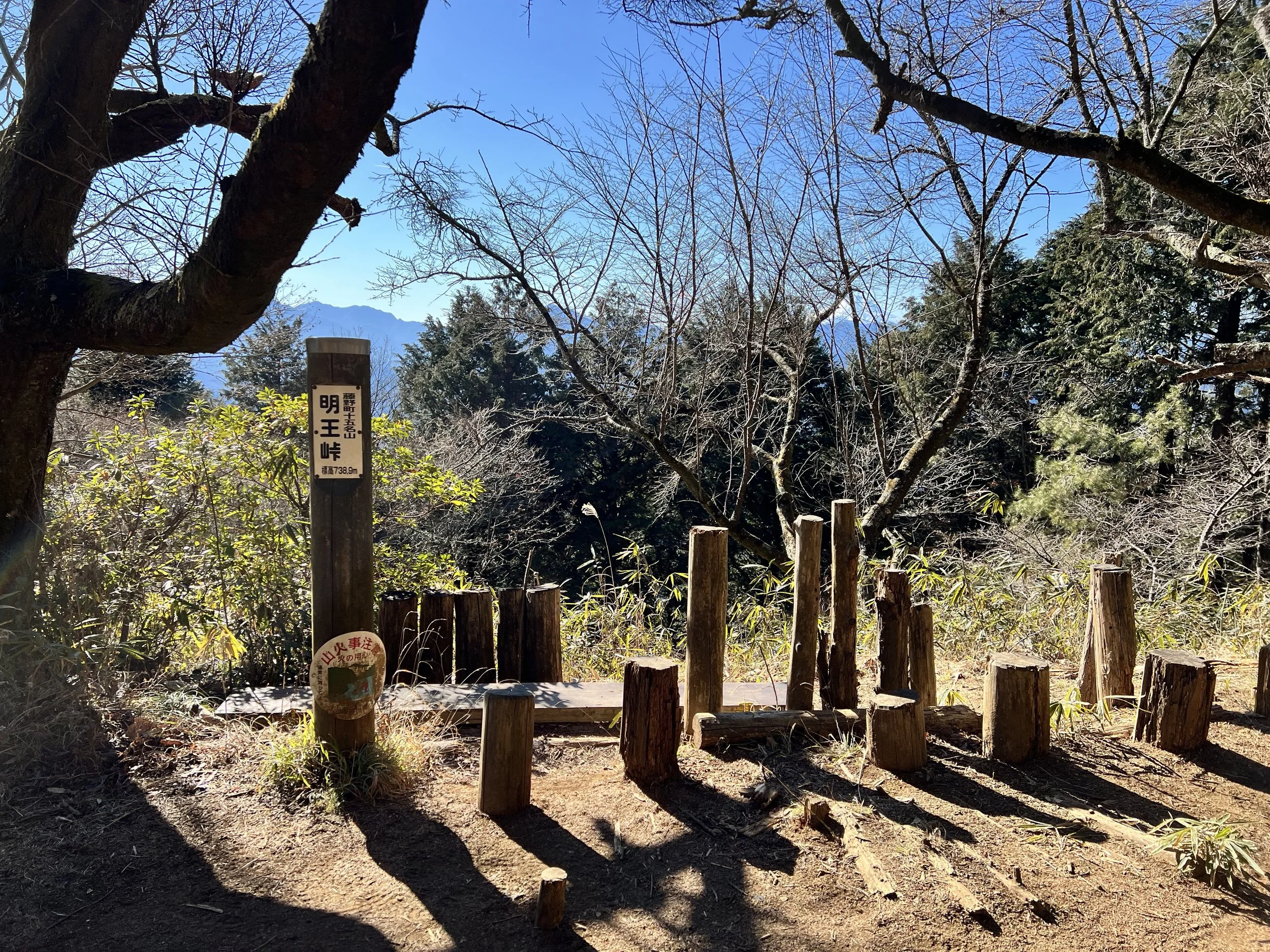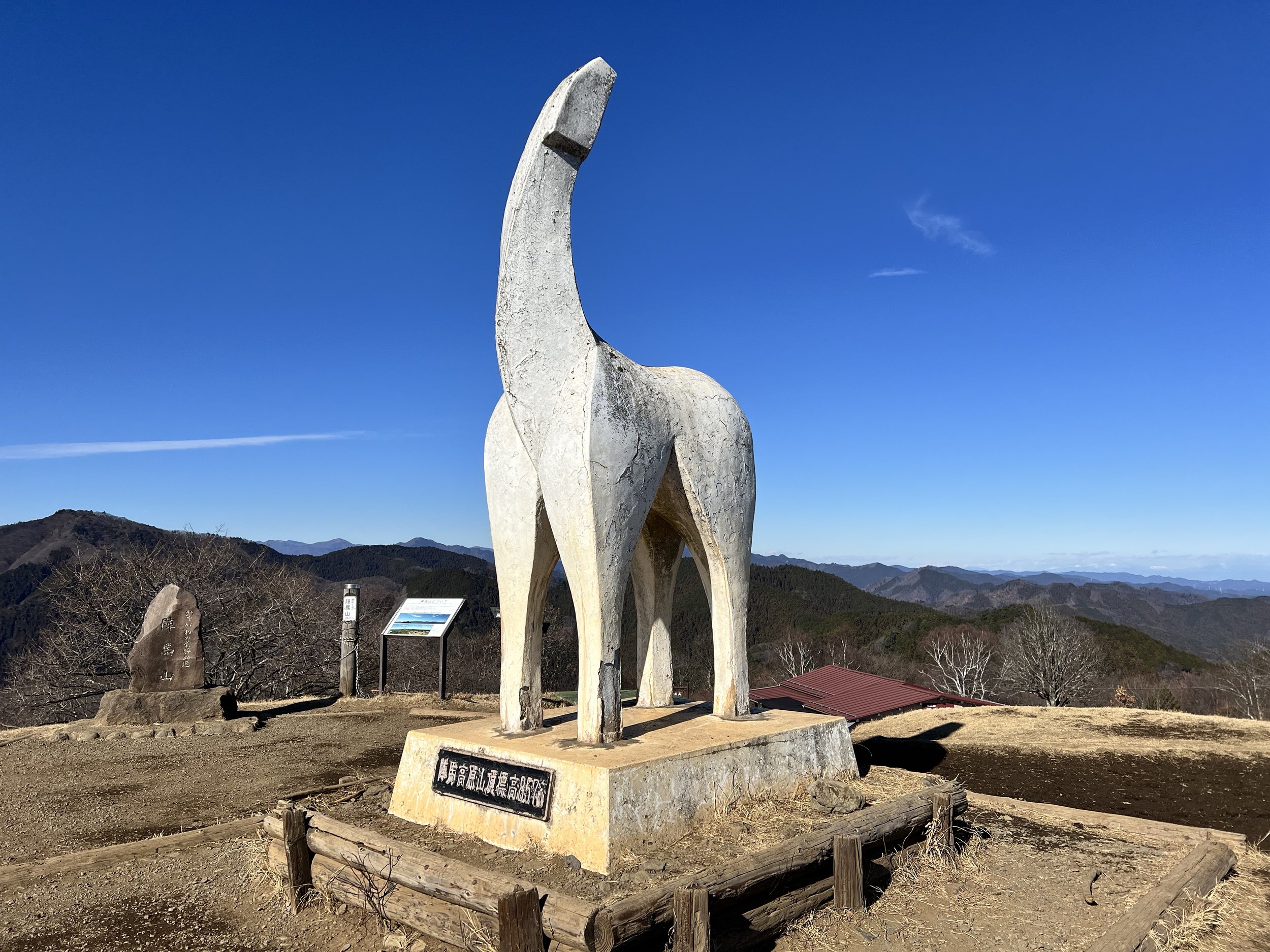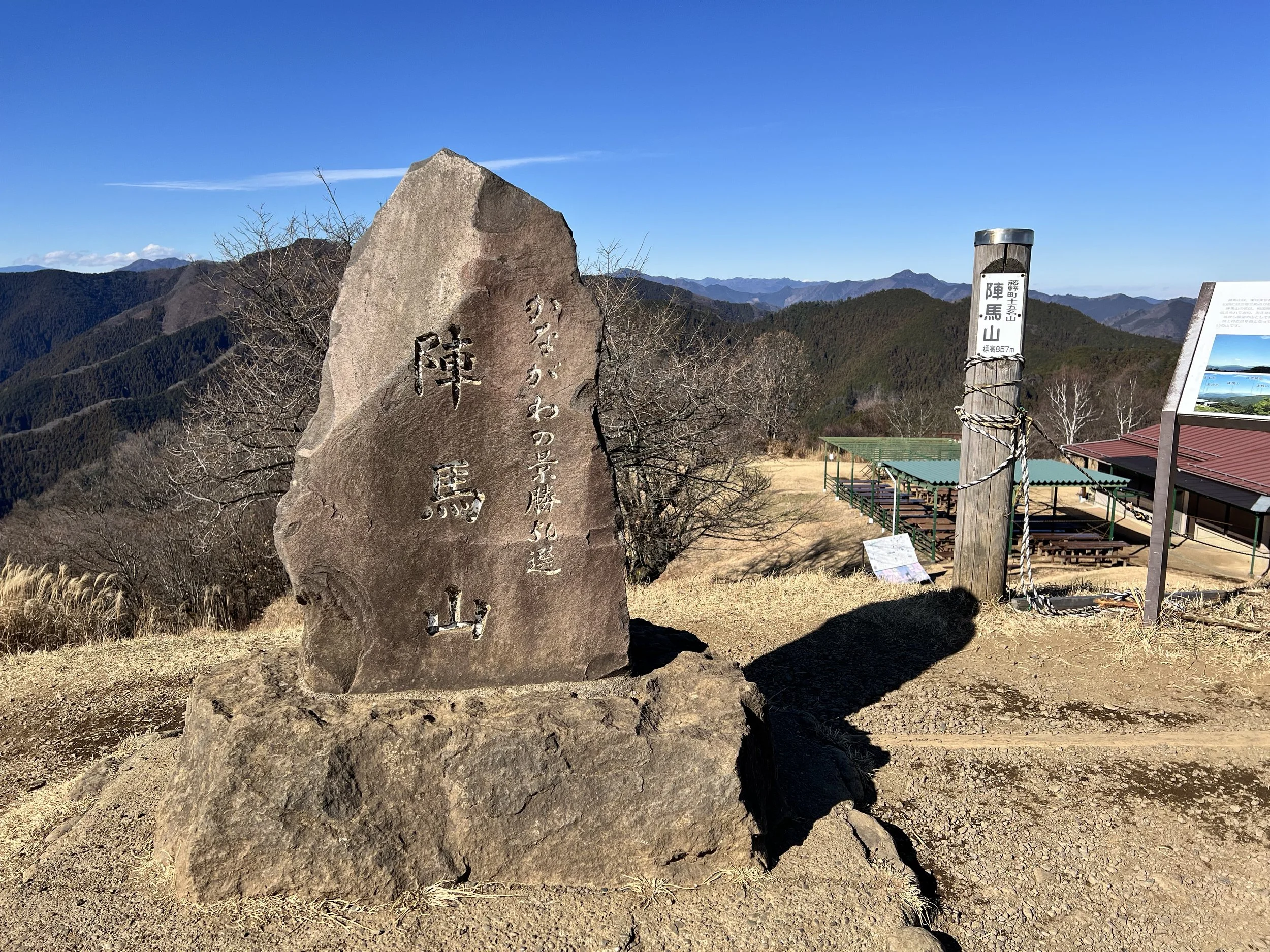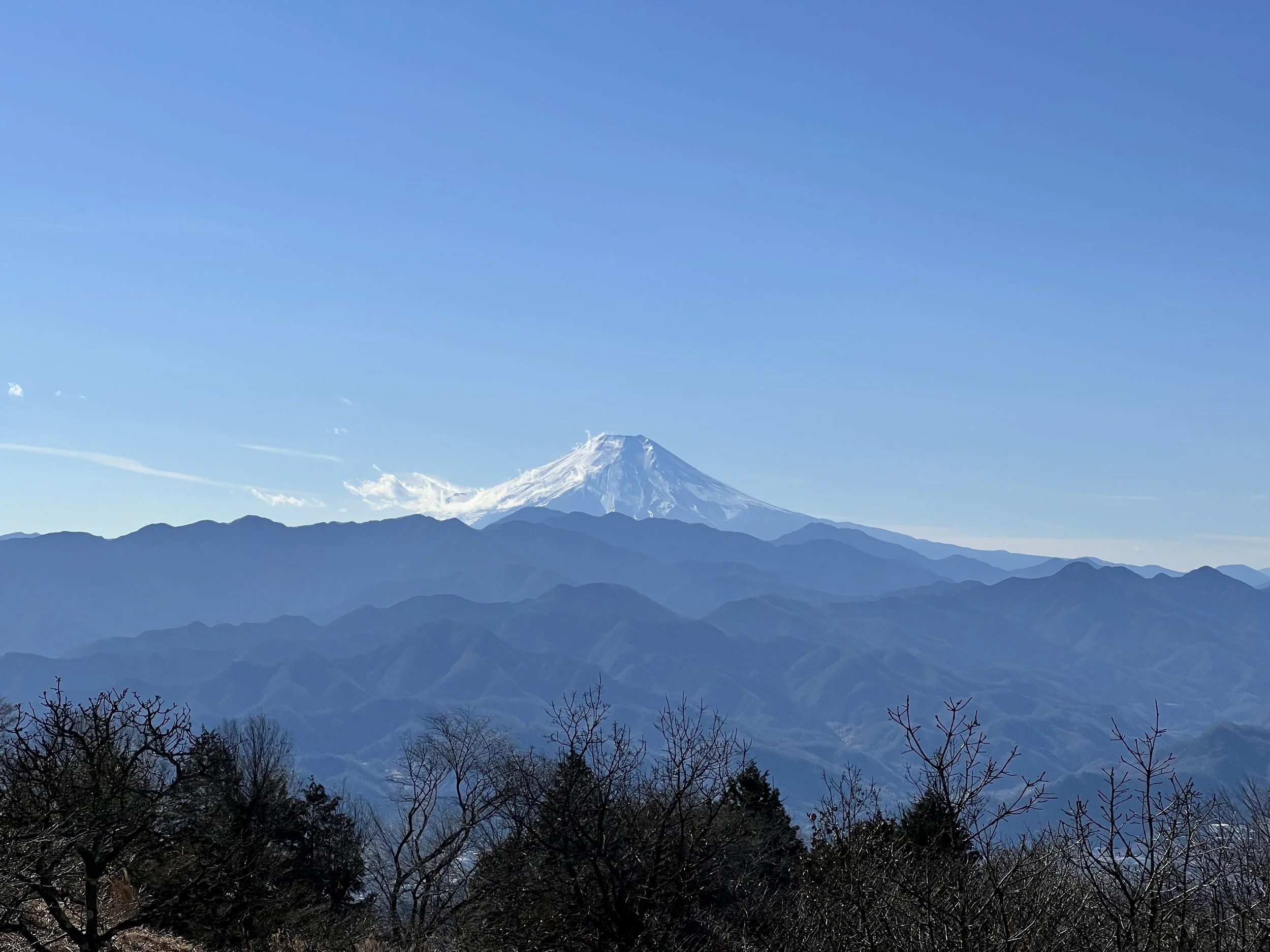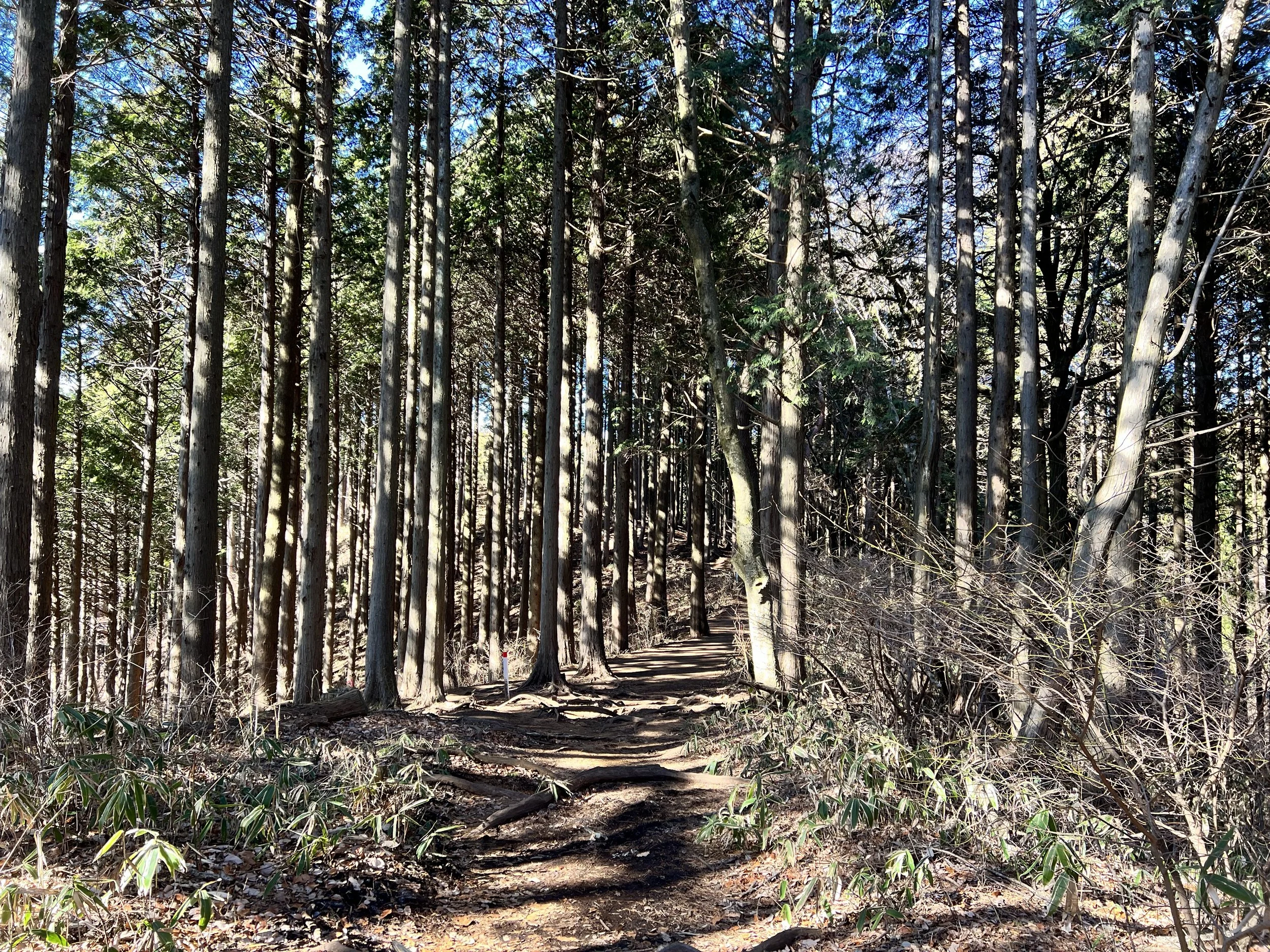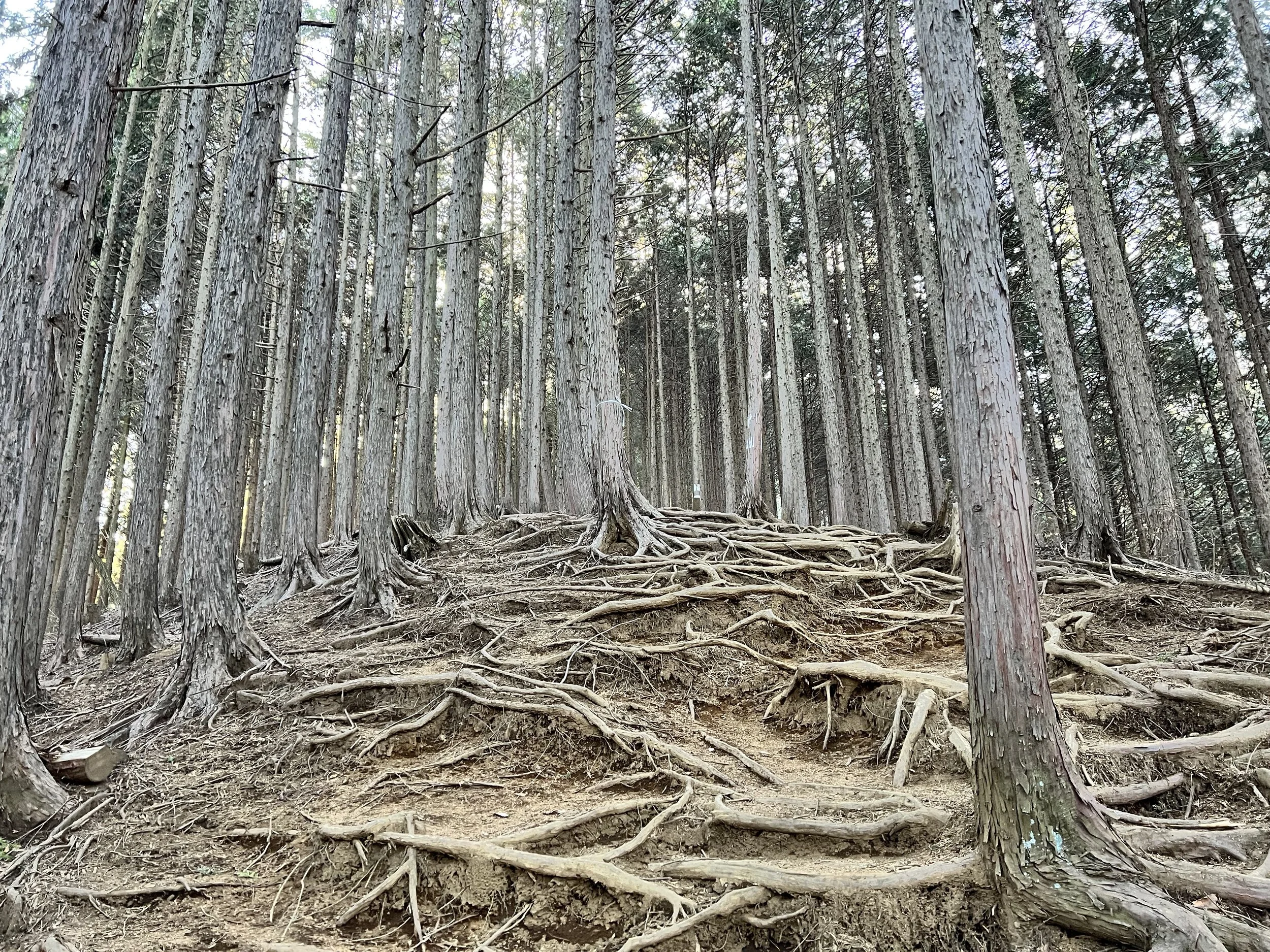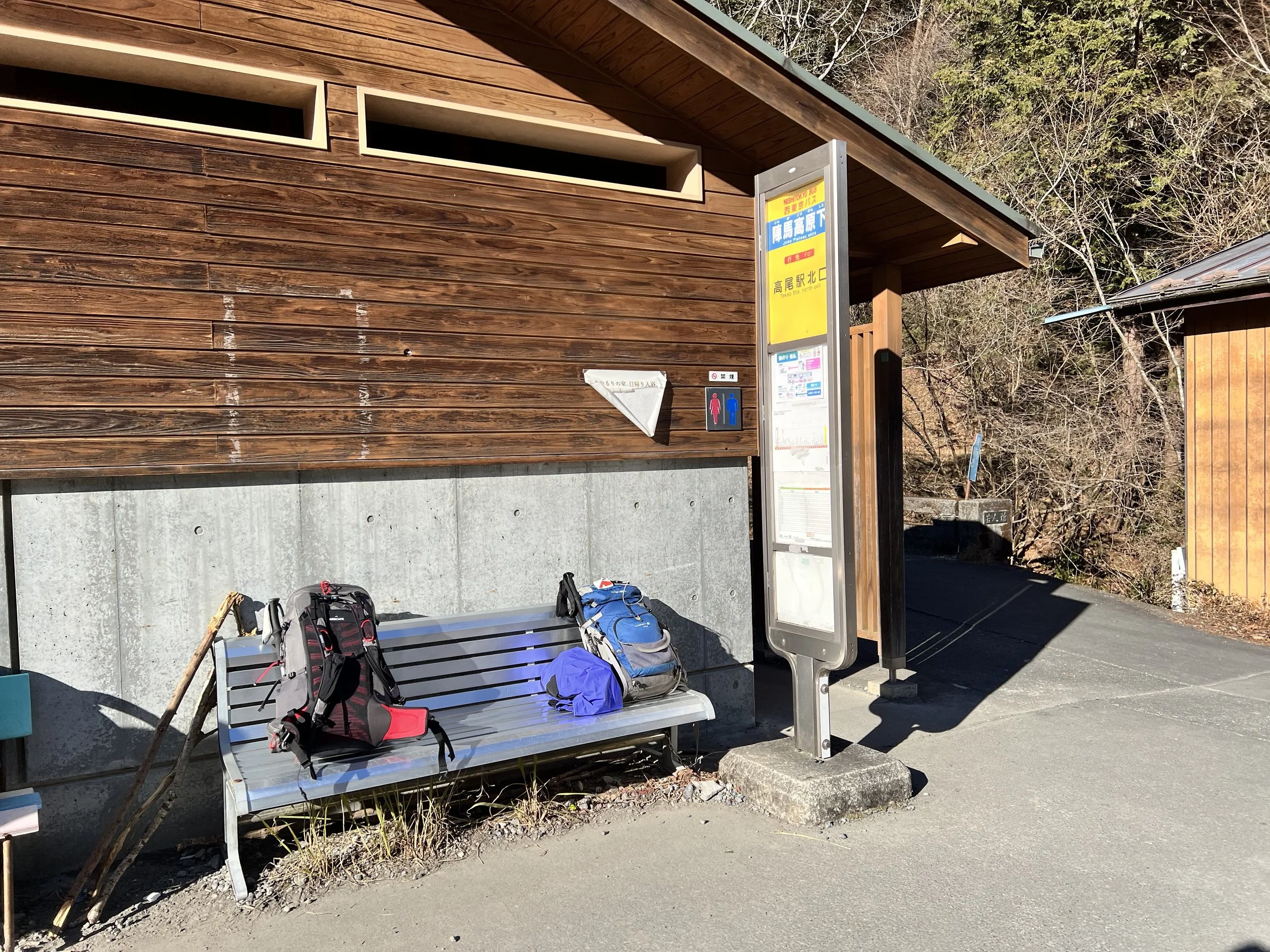Mount Jinba - Kanagawa, Japan
I didn’t expect a train delay this morning, and I was hoping it wouldn’t set me back too much, since it takes about an hour and a half to get to Sagamiko Station from where I was. Luckily, I arrived just before 11 a.m., with plenty of daylight left for the hike. From the station, it was a short 10-minute walk through a quiet alley to the trailhead behind Jigenji Temple.
At the start of the hike, my muscles felt tight and my feet were heavy. I used a lot of energy pushing up the hill, and it took about 2 km before my body settled into a rhythm. Some steep sections were muddy, so I focused on careful footing to avoid slipping. At Myouo Pass, the trail widened and became easier. The view of Mt. Fuji here was stunning, with a photo spot clearly marked by signs. I paused for a quick photo. There is an outhouse at the pass, but I honestly wouldn’t use it—the surrounding area looked damp and muddy. I continued along the trail, noticing more trail runners in this section. The path was wide and well maintained.
As I approached the peak, I saw the concrete horse statue marking the summit, fitting for a mountain named “horse camp.” Two nearby tea houses offered clear views of Mt. Fuji, but in winter, only one was open. I spent 15 minutes photographing and snacking at a picnic table before heading down the other side.
This descent is the most popular route for ascending, as it’s shorter and reaches the summit faster. The trail followed a newly developed path with exposed tree roots. By the time I reached the bus stop, I hadn’t realized I’d scratched my right calf—it was only when I wiped dirt off my legs that I noticed the cut. There is a soba noodle shop right next to the bus stop. I considered grabbing a bowl, but didn’t have enough time before the bus. The soba looked really good.
History & Background
Mount Jinba sits on the border of Tokyo and Kanagawa Prefectures and rises to 857 metres. Its name, meaning “horse camp,” reflects its historical use as a military signal post during feudal times, where horses were stationed for rapid communication. Today, the mountain is popular for day hikes, offering sweeping views of Mt. Fuji, Mount Takao, and the surrounding landscapes. The iconic horse statue at the summit was installed to celebrate the mountain’s name and has become a well-known landmark for hikers.
Getting There
There are several ways to reach Sagamiko Station from Tokyo. The most straightforward is to take the direct Chuo Line from Tokyo to Sagamiko. Since I was staying in Kawasaki, I began my journey at Kawasaki Station, taking the Nambu Line toward Tachikawa before transferring to the Chuo Line to reach Sagamiko Station. Once there, the trailhead is just a 10-minute walk.
Route Overview
Distance: 11.12 km (Sagamiko Station → Jinba Kogen Shita Bus Stop)
Total elevation gain: 767 m
Duration: 2 hr 59 min (with breaks 3 hr 19 min)
Difficulty: Intermediate
Peaks: Myouo Pass 明王峠 738m, Mt Jinba 陣馬山 855m
Cost Breakdown
Train: Kawasaki Station → Sagamiko Station — ¥996
